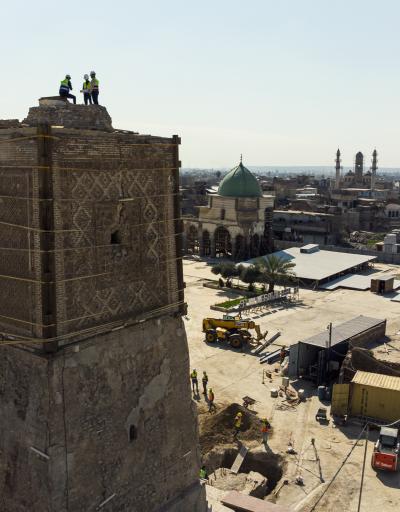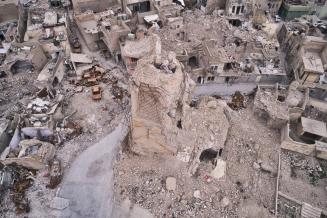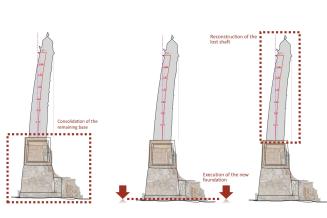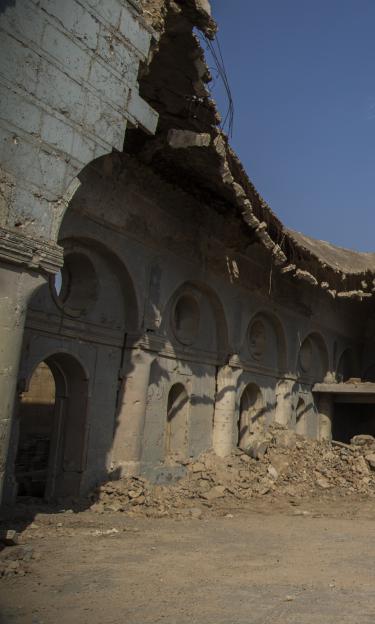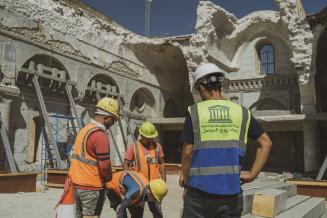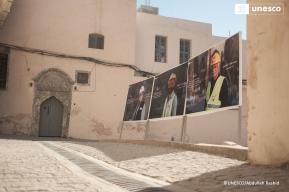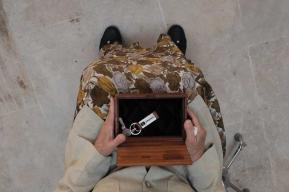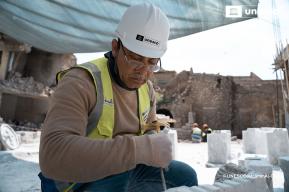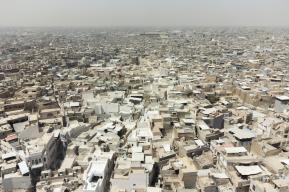Today, after an initial preparatory phase that lasted nearly 3 years, UNESCO and its partner, the United Arab Emirates, launch the formal reconstruction phase of 3 iconic sites in Mosul, Iraq in cooperation with the Iraqi Ministry of Culture and the Sunni Waqf.
The common denominator to all our work in Mosul is one, humanity. Today we witness firsthand the power of international mobilization, not only to restore heritage but also to create jobs, train youth, build hope and peace.

The preparatory phase for all three sites was key to ensure that we rebuild strong. To prepare the sites, UNESCO started by securing the perimeters and clearing the rubble that was packed with booby traps. It was followed by a stabilization phase and the preparation of the detailed design in consultation with the local population and multiple experts for the execution of the works.
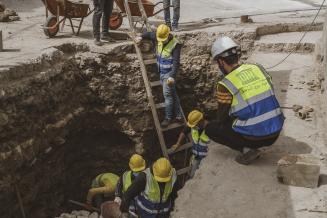
Al-Hadba minaret
Al-Hadba minaret, represents over 800 years of history that commanded the city’s skyline and become a symbol for Mosul and Iraq. After a comprehensive survey, the people of Mosul have spoken and expressed their wish to see their minaret rebuilt as it was before its destruction in 2017, 45m tall, decorated with ornamental brickwork and leaning. Rebuilding the minaret was already a complex endeavor – rebuilding it in its leaning shape, using traditional materials and bricks is an engineering challenge.
The reconstruction process entails a series of specialized engineering works of securing and permanently consolidating the bases on which, later the reconstructed cylindrical shaft will rest. One of the most challenging operations in the reconstruction process will be then the construction of a new foundation system that will connect the base of the minaret with the stable soil. Only then can the reconstruction of the cylindrical shaft of the minaret with brick masonry using the maximum extent possible the original 44,000 bricks and with a level of inclination of about 1.60m. Because the minaret will be entirely rebuilt with bricks, the previous level of inclination of about 2.5m is impossible to reach.
The result is a state-of-the-art project based on the most advanced engineering practices that will guarantee stability of the monument, while ensuring compatibility of materials and construction techniques.
Al-Saa’a Church
In 1870, the first pontifical mission was sent to Mesopotamia. It founded in Mosul the Convent of Our Lady of the Hour – Couvent Notre-Dame de L’Heure - also known as the Latin Church. From its origin, this convent had three dimensions: religious, cultural and social. The structure of the Al-Saa’a Church was damaged during the occupation of the city by ISIL/Da’esh and its convent was looted and ransacked.
The design of the project site has been the subject of numerous bilateral consultations in collaboration with the Dominican Order and Iraqi relevant authorities. Such detailed consultations with experts and local stakeholders has allowed the designs to satisfy local expectations and generate of a sense of local ownership.
The convent of Al-Saa’a Church was built by both Christians and Muslims. In recent decades, it had become a Marian sanctuary to which believers from both confessions go. This is what characterizes Mosul: this city is a mosaic, marked by different colours that form a common design. This link was broken by the war. We want to restore it today.
Al-Tahera Church
Al-Tahera Syriac Catholic Church was built in 1859 and renovated about 100 years after its construction. It is characterized by its multi-altars, as well as mezzanine floor that occupies the Church’s western side. The church area is about 650m2.
The Church was severely damaged in 2017. The reconstruction work is quite complex as the roof collapsed, large parts of its arcades were destroyed, as well as its external walls.
Similarly to Al Saa’a Church project, Al-Tahera project was aligned with local community expectations and both cultural and religious history and relatability. The detailed design is now completed for the church, which will be reconstructed as it was, and the Iraqi contractor for the execution of the works has been selected.
These projects are part of UNESCO’s flagship initiative launched in 2018 to Revive the Spirit of Mosul, less than a year after this 2500-year-old city was largely destroyed. With the support of 31 countries, and in close cooperation with the Iraqi Government and people, this international mobilization is unique in its form and one of the most ambitious rehabilitation projects in decades. UNESCO is set to reconstruct the iconic Al-Nouri Mosque and its Al-Hadba Minaret, Al-Saa’a and Al Tahera Churches, 124 heritage houses, the Aghawat Mosque as well as Al-Ekhlass school in the Old City of Mosul. The entire initiative also created more than 3 100 local jobs.
Within the scope of UNESCO’s flagship initiative “Revive the Spirit of Mosul” that aims to revive a spirit of peaceful co-existence and social cohesion, through heritage, cultural life and education, the United Arab Emirates partnered with UNESCO investing US$50.4 million for the restoration and reconstruction of the historic landmarks of Mosul – Al-Nouri Mosque and Al-Hadba minaret, Al-Saa’a and Al-Tahera Churches. UNESCO works in partnership with the United Arab Emirates and in coordination with the Government of Iraq, local partners and international experts.


